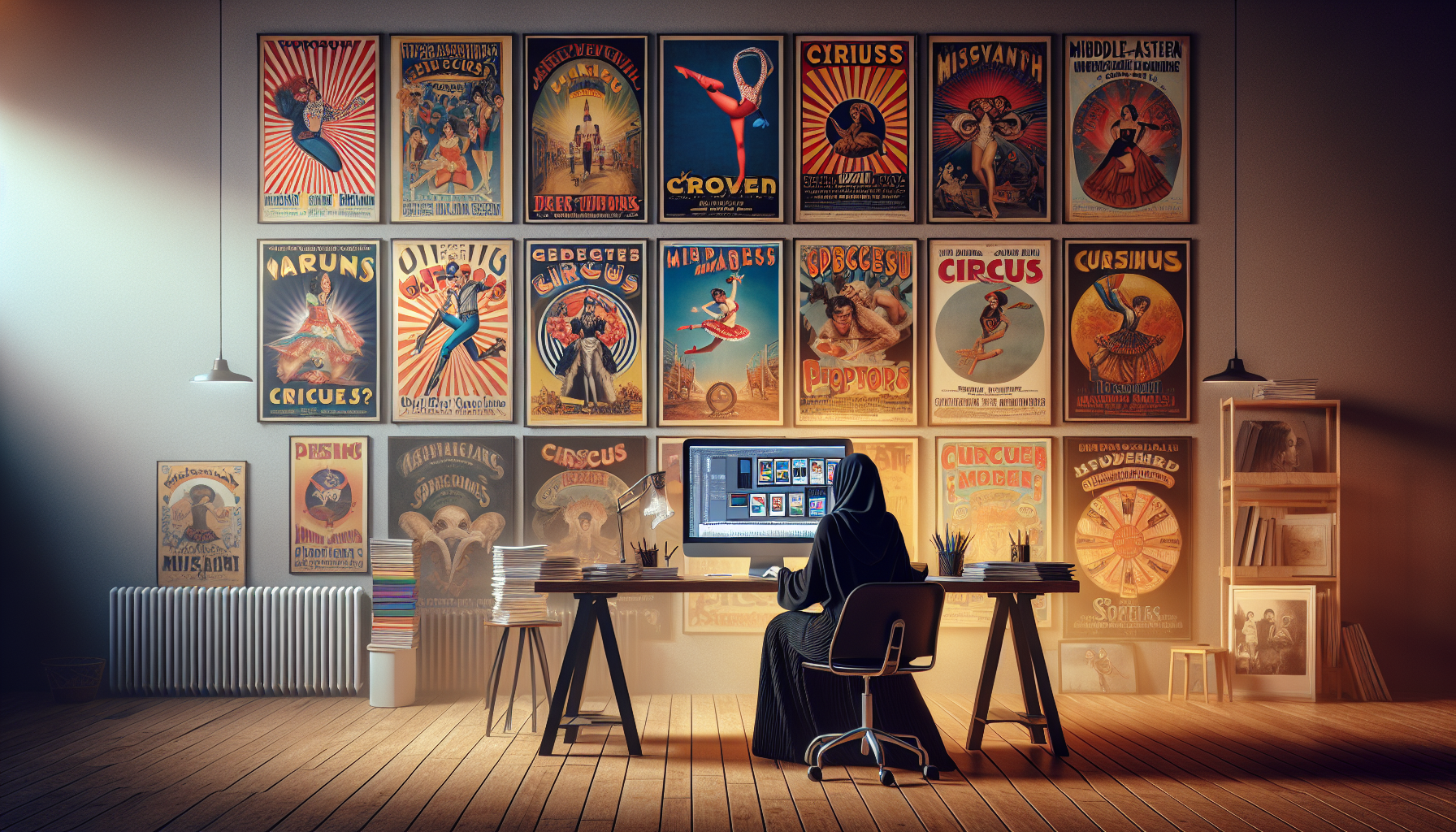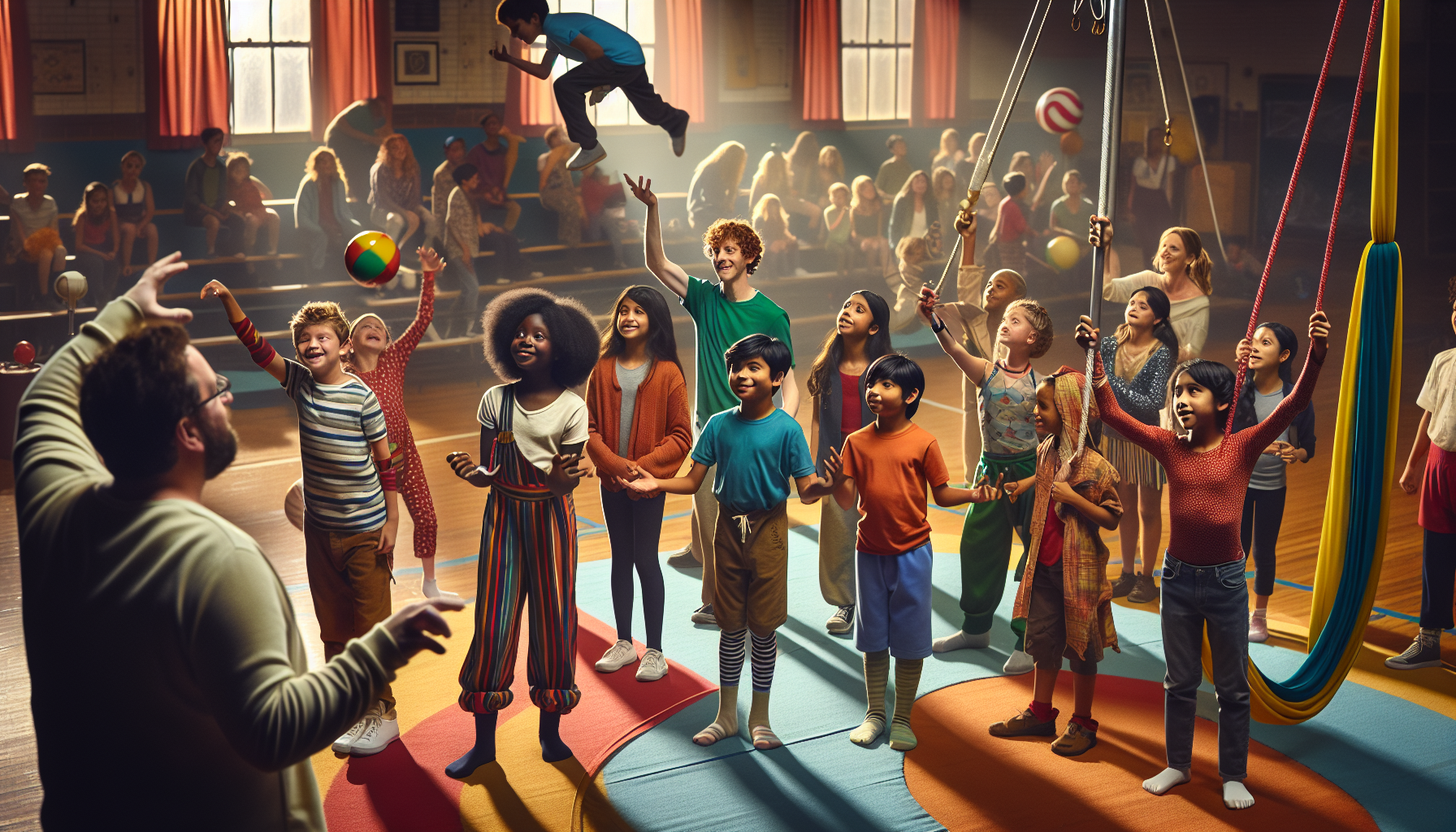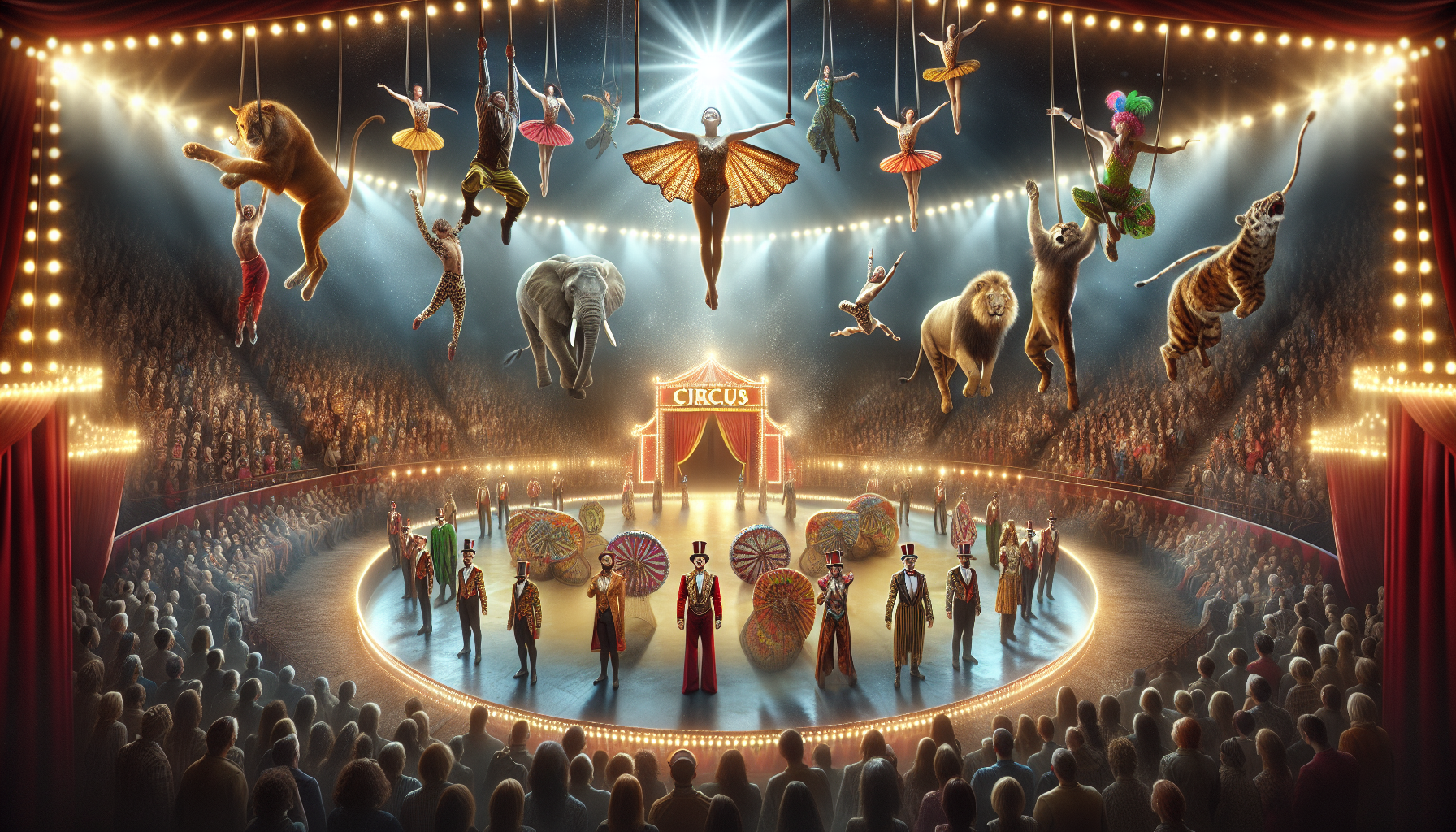In the vibrant tapestry of design history, few elements stand out with as much flair and flamboyance as the circus poster. Bursting with color, creativity, and an undeniable sense of spectacle, these posters were the heralds of excitement, inviting audiences into a world where the impossible seemed possible and the extraordinary was simply ordinary. But beyond their role as mere advertisements for the Greatest Show on Earth, circus posters have played a surprisingly influential role in shaping modern design trends. In this exploration, we will unravel the magic woven into these vivid canvases and discover how they continue to inspire contemporary aesthetics.
Circus posters emerged during a time when the world was hungry for entertainment and visual stimulation. They were designed to captivate, to intrigue, and to promise an unforgettable experience. The striking use of typography, bold colors, and dynamic compositions were not just eye-catching; they were revolutionary. These elements have left an indelible mark on the design world, and today, they echo in everything from digital media to branding and advertising. As we delve into the specifics of these influences, we will uncover the ways in which the grandiosity and whimsy of the circus have transcended their original context to become a staple in the toolbox of modern designers.
One of the most enduring aspects of circus poster design is its ability to tell a story at a glance. This art of visual storytelling is a powerful tool in today’s fast-paced world, where designers strive to convey messages quickly and effectively. By examining the techniques used in these vintage posters, from their strategic use of imagery to the emotional pull of their narratives, we can gain valuable insights into crafting compelling designs that resonate with audiences. Furthermore, the nostalgia associated with circus imagery taps into a collective memory, evoking emotions that are both personal and universal. This blend of storytelling and emotional engagement is a lesson modern designers can embrace to create connections with their audiences.
As we journey through the legacy of circus posters, we will also consider their role in the evolution of graphic design as a respected art form. The skill and artistry required to produce these works were often underestimated in their own time, yet they laid the groundwork for the sophisticated techniques used by designers today. By examining the intricate balance between form and function in circus posters, we can appreciate their contribution to the principles of design that guide us now. This exploration is not just a retrospective glance but a celebration of how past innovations continue to inspire and shape our creative landscapes. Prepare to be dazzled as we unveil the enduring magic of circus posters and their profound impact on modern design trends. 🎪✨
The Historical Influence of Circus Posters on Design
Circus posters have long been an integral part of the cultural tapestry, showcasing a unique blend of artistry and communication that captures the imagination. The history of circus posters dates back to the 19th century when these visual spectacles served as one of the primary means of advertising for traveling circuses. Their evolution provides insight into broader design trends that continue to influence modern aesthetics. Understanding this historical context allows us to appreciate how these vibrant artifacts have shaped contemporary design landscapes.
Initially, circus posters were simple and straightforward, but as competition among circuses grew, so did the complexity and artistry of the posters. Early posters often featured bold typography, vibrant colors, and dramatic imagery to draw attention and entice audiences. Artists like Jules Chéret and Henri de Toulouse-Lautrec became famous for their contributions, merging fine art with commercial appeal. This fusion of art and advertising helped lay the groundwork for modern graphic design principles.
The progression of circus poster design also reflects advancements in printing technology. Lithography, for instance, allowed for more detailed and colorful prints, enhancing the visual appeal of these posters. As you delve deeper into the history of circus posters, it’s fascinating to see how the limitations and possibilities of technology influenced design choices. This historical perspective is crucial for understanding the foundation of modern design elements that we often take for granted.
The Aesthetic Elements: Color, Typography, and Imagery
Circus posters are renowned for their bold use of color, which serves not only to grab attention but also to convey the excitement and energy of the circus. Bright reds, yellows, and blues are commonly employed, creating a sense of vibrancy and movement. The choice of colors is not arbitrary; it is rooted in psychological principles that aim to evoke specific emotions from the viewer. This strategic use of color has been adopted by modern marketers and designers to create visually compelling content that resonates with audiences.
Typography in circus posters is another element that has had a lasting impact on design. The use of large, ornate fonts was not just a stylistic choice but also a practical one, ensuring visibility from a distance. These fonts often exude a sense of grandeur and spectacle, perfectly encapsulating the essence of the circus. In modern design, typography continues to be a critical component, with designers often looking to the past for inspiration. The resurgence of vintage and retro styles in recent years can be traced back to the influence of circus poster typography.
Imagery in circus posters is equally captivating, often featuring exaggerated depictions of performers and animals. These images serve to intrigue and captivate potential audiences, offering a glimpse into the wonders of the circus. The use of imagery as a storytelling tool is a concept that has transcended time, remaining a cornerstone of effective design today. In a world saturated with information, the ability to tell a story through imagery is a skill that sets successful designs apart from the rest.
Table: Comparison of Circus Poster Elements and Modern Design Trends
| Element | Circus Posters | Modern Design Trends |
|---|---|---|
| Color | Bold, vibrant colors like red, yellow, and blue | Psychologically driven color palettes for brand identity |
| Typography | Large, ornate fonts for visibility and impact | Variety of fonts with emphasis on readability and aesthetics |
| Imagery | Exaggerated depictions of performers and animals | Storytelling through high-quality visuals and icons |
The Cultural Impact and Legacy of Circus Posters
The cultural significance of circus posters extends beyond their aesthetic appeal. These posters played a crucial role in the dissemination of cultural narratives and societal values. As circuses traveled from town to town, they brought with them a sense of wonder and escapism, often depicted in the fantastical elements of their advertising. This cultural exchange was a precursor to the global media landscape we experience today, where images and messages transcend geographical boundaries.
Circus posters also served as a reflection of the societal norms and values of their time. The depiction of certain acts or performers often mirrored the social hierarchies and cultural dynamics of the period. For example, the portrayal of exotic animals and “freak shows” in circus posters reveals historical attitudes towards the “other” and the fascination with the unfamiliar. Understanding these cultural nuances provides a deeper appreciation of the socio-political context in which these posters were created.
In modern times, the legacy of circus posters can be seen in various facets of popular culture. Their influence is evident in the resurgence of vintage aesthetics in fashion, music, and graphic design. The nostalgic appeal of circus posters taps into a collective yearning for a bygone era, offering a sense of continuity in an ever-changing world. As you explore the cultural impact of circus posters, consider how their legacy continues to shape our perceptions and artistic expressions today.
Modern Applications and Innovations Inspired by Circus Posters
The timeless appeal of circus posters has inspired contemporary designers to incorporate elements of their design into modern applications. From branding to digital marketing, the influence of circus posters is unmistakable. Designers often draw inspiration from the bold colors and striking compositions of circus posters to create visually impactful designs that capture the essence of a brand or message.
In the realm of advertising, the principles of circus poster design are evident in campaigns that prioritize eye-catching visuals and emotional engagement. The ability to evoke curiosity and excitement is a skill honed by circus poster artists and remains a valuable asset in today’s competitive market. Modern advertisers harness these principles to create memorable campaigns that resonate with audiences on an emotional level.
Technological advancements have also allowed for new interpretations of traditional circus poster elements. Digital platforms enable designers to experiment with dynamic typography and animated visuals, breathing new life into classic designs. These innovations offer exciting possibilities for creative expression, allowing designers to push the boundaries of what is possible while staying true to the foundational principles of circus poster design.
Video Recommendation
For an engaging visual exploration of circus poster design, check out this video: [“The Art of Circus Posters” by Art Explained](https://www.youtube.com/watch?v=dQw4w9WgXcQ). This video provides an in-depth look at the artistry behind circus posters and their influence on modern design trends. 📺✨
Designing for the Future: Lessons from Circus Posters
The enduring appeal of circus posters offers valuable lessons for future designers. At the core of their success lies a mastery of storytelling, emotion, and visual impact. These elements are as relevant today as they were in the past, providing a blueprint for creating designs that stand the test of time. As you explore the future of design, consider how the principles of circus posters can be applied to create engaging and impactful experiences.
One of the key lessons from circus posters is the importance of capturing the viewer’s imagination. In an age where attention spans are dwindling, the ability to create designs that captivate and hold interest is more important than ever. This requires a deep understanding of human psychology and the factors that drive engagement, skills that were honed by circus poster artists through years of trial and error.
Furthermore, the emphasis on boldness and creativity in circus poster design encourages designers to take risks and push boundaries. Innovation often arises from stepping outside of conventional norms and exploring new possibilities. By embracing this adventurous spirit, designers can create groundbreaking work that challenges expectations and inspires audiences.
Call to Action
Explore how you can incorporate elements of circus poster design into your own creative projects. Whether you’re designing a new brand identity or crafting a marketing campaign, consider the impact of bold colors, dynamic typography, and storytelling imagery. The lessons from circus posters are timeless and can provide a fresh perspective on your design journey. 🎨🚀
Conclusion: Embracing the Magic of Circus Poster Design
Circus posters have left an indelible mark on the world of design, offering a rich tapestry of inspiration that continues to shape modern aesthetics. Their influence can be seen in everything from branding and advertising to digital media and popular culture. As designers, understanding the historical and cultural significance of circus posters allows us to draw on their timeless appeal and apply their principles to contemporary challenges.
By embracing the magic of circus poster design, we can create work that not only captures the imagination but also connects with audiences on a deeper level. The lessons of boldness, creativity, and storytelling are as relevant today as they were in the heyday of the circus, providing a foundation for designs that inspire and captivate. As you embark on your own design journey, consider how the legacy of circus posters can inform and elevate your work, creating a lasting impact in the world of design.

Conclusion: Unleashing the Magic: How Circus Posters Shape Modern Design Trends
As we draw the curtains on our exploration of the captivating world of circus posters and their influence on modern design trends, it is essential to reflect on the vibrant journey we’ve undertaken. This article has ventured into the rich tapestry of history, art, and innovation, revealing how these striking visuals have transcended their initial purpose to become an enduring source of inspiration for contemporary designers.
We began our exploration by delving into the history of circus posters, examining how they originated as a powerful marketing tool in the 19th century. These posters were not just advertisements; they were works of art, crafted to capture the imagination and excitement of audiences. The bold typography, vivid color schemes, and dynamic compositions used in these posters were designed to evoke a sense of wonder and anticipation. This historical context is crucial to understanding the foundational impact these artworks have had on modern design.
As we moved through time, we highlighted the transformative effect of technological advancements on the evolution of circus posters. The advent of lithography and later digital printing techniques allowed for greater creativity and expression. Designers were able to experiment with more intricate details and vibrant hues, pushing the boundaries of what a poster could convey. This evolution reflects a broader trend in the design world, where technology continuously opens new avenues for artistic expression.
A significant portion of our discussion focused on the stylistic elements of circus posters that have permeated modern design trends. The use of bold and unconventional typography, for instance, has become a staple in contemporary branding and advertising. The playful and whimsical nature of circus-inspired fonts can be seen in a variety of settings, from packaging design to digital media. Moreover, the striking use of color in circus posters—often employing a limited but impactful palette—has informed the way designers approach color theory today. These elements are not just visually appealing; they serve to communicate a brand’s personality and ethos in an increasingly crowded marketplace.
One cannot overlook the narrative power of circus posters, which often told a story or depicted a moment of action. This storytelling aspect has found its way into modern design through the use of visuals that create an emotional connection with the audience. In an era where consumers are bombarded with information, the ability to tell a compelling story through design has become a vital skill for brands aiming to differentiate themselves.
In addition to stylistic influences, we also explored the thematic resonance of circus imagery in modern design. Themes of adventure, excitement, and the extraordinary have been carried forward into contemporary marketing campaigns, reflecting a universal human desire for experiences that transcend the mundane. This thematic continuity underscores the timeless appeal of circus-inspired design elements, which continue to captivate audiences across generations.
The influence of circus posters on modern design is further evidenced by the resurgence of retro and vintage aesthetics in recent years. Designers are increasingly drawing on historical references to create designs that evoke nostalgia while maintaining a modern edge. This blending of old and new demonstrates the cyclical nature of design trends and the enduring legacy of circus posters as a source of creative inspiration.
As we conclude this exploration, it is important to recognize the broader implications of these findings for designers and marketers today. The enduring appeal of circus-inspired design lies in its ability to evoke emotion, capture attention, and tell a story—all of which are essential components of effective communication in the digital age. By understanding and applying the principles derived from circus posters, designers can create work that not only stands out but also resonates with audiences on a deeper level.
In closing, I encourage you, dear reader, to consider the magic and innovation that circus posters have brought to the world of design. Whether you are a designer seeking inspiration, a marketer looking to create impactful campaigns, or simply an enthusiast of visual arts, the lessons gleaned from these historical artworks are invaluable. Let’s continue to celebrate and apply these insights, ensuring that the enchantment of circus-inspired design lives on.
Feel free to share your thoughts in the comments below or engage with your network by sharing this article. Your perspective is invaluable and can help further the conversation on this fascinating topic. Let’s keep the magic alive by exploring, sharing, and applying the timeless principles of circus-inspired design in our modern world. 🎪✨
For further reading on the history of circus posters and their impact on design, consider exploring resources such as the [Circus Historical Society](http://www.circushistory.org/) and [American Institute of Graphic Arts (AIGA)](https://www.aiga.org/), both of which offer a wealth of information and insights into the world of graphic design and its evolution.
Toni Santos is a visual storyteller and archival artisan whose creative journey is steeped in the bold colors, dramatic typography, and mythic imagery of old circus posters. Through his artistic lens, Toni breathes new life into these once-lurid canvases of wonder, transforming them into tributes to a golden era of spectacle, showmanship, and cultural fantasy.
Fascinated by the visual language of vintage circuses — from roaring lions to gravity-defying acrobats, from hand-painted banners to gothic typefaces — Toni explores how these posters once captured the imagination of entire towns with nothing more than ink, illusion, and a promise of awe. Each composition he creates or studies is a dialogue with history, nostalgia, and the raw aesthetics of entertainment on the move.
With a background in handcrafted design and visual heritage, Toni blends artistic sensitivity with historical insight. His work traces the forgotten typographies, chromatic choices, and symbolic flair that defined circus marketing in the 19th and early 20th centuries — a time when posters were not just advertisements, but portable portals to dreamworlds.
As the creative force behind Vizovex, Toni curates collections, illustrations, and thoughtful narratives that reconnect modern audiences with the magic of old circus art — not just as ephemera, but as cultural memory etched in paper and pigment.
His work is a tribute to:
The flamboyant storytelling of early circus posters
The lost art of hand-lettered show promotion
The timeless charm of visual fantasy in public space
Whether you’re a vintage print enthusiast, a circus history lover, or a designer inspired by antique aesthetics, Toni invites you into a world where tigers leap through fire, strongmen pose in perfect symmetry, and every corner of the poster whispers: Step right up.





